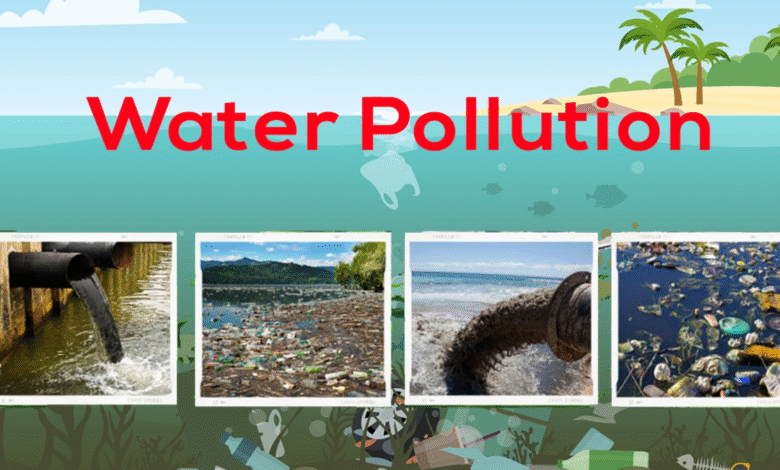When the Water Turns Against Us: A Closer Look at the Mess We’re Making

There’s something sacred about water. It nourishes, cleanses, cools, comforts. From childhood sprinkler runs to late-night tea sessions, water’s always been there—silent, steady, trustworthy. Which is exactly why it stings a little more when we realize just how badly we’ve treated it.
You’ve probably heard the term tossed around more times than you can count. News headlines, school essays, activist campaigns—it’s everywhere. But let’s pause for a minute and really talk about it. What is water pollution, really? Not just a buzzword, not just murky rivers or oil spills in documentaries. What’s going on beneath the surface—literally?
The Ugly Truth Behind a Seemingly Clear Stream
Let’s say you’re hiking. You come across a stream. It’s gurgling, glassy, full of life. Seems clean, right? But the thing is, most pollutants don’t wear neon signs. Heavy metals don’t wave at you from the riverbed. Pesticides don’t smell funky. Microplastics? They’re basically invisible.
Water pollution happens when harmful substances sneak their way into water bodies—rivers, lakes, oceans, even underground sources—and ruin what should be pure. It’s like an unwanted guest at a dinner party: doesn’t belong there, messes everything up, and sticks around way too long.
Some of it is dramatic and obvious—oil slicks, chemical foam, fish washing up dead. But most of it? It’s quiet. Persistent. And far more widespread than we’d like to admit.
So… Who’s to Blame?
Short answer? All of us. In big ways and small.
One of the major causes of water pollution is industrial waste. Factories discharge untreated or poorly treated water into nearby rivers and streams. Think dyes, solvents, oils, acids—you name it. It’s cheaper to dump than to filter.
Agriculture plays a sneaky role too. All those lush, green crops? They’re often kept alive by fertilizers and pesticides, which run off into waterways during rains. And then there’s livestock waste—an entire issue of its own that rarely makes headlines.
Cities? Not off the hook either. Storm drains carry trash, oil, and God-knows-what-else straight to water bodies. And let’s not even start on the places where raw sewage still ends up in rivers (yes, that’s still happening in 2025).
Households contribute as well. Every time we flush medicines, pour cooking oil down the sink, or use harsh cleaning products that end up in wastewater—we’re adding to the problem. One bottle of bleach or a box of expired pills may seem like nothing, but multiplied by millions of homes, it adds up. Fast.
The Ripples We Can’t Ignore
The effects of water pollution don’t just sit neatly in the background. They crash into ecosystems and ripple through entire communities. Fish and aquatic life? They suffer first. Polluted water messes with their breeding, feeding, and survival. But the chain reaction doesn’t stop there.
Humans feel it, too. Contaminated drinking water causes health issues—everything from stomach bugs to long-term damage like lead poisoning or exposure to mercury. In places where clean water is already a luxury, pollution pushes survival into a daily struggle.
And let’s talk economy. Polluted water affects agriculture (crops irrigated with dirty water get contaminated), tourism (no one wants to swim in a garbage-strewn lake), and even property values. Dirty water doesn’t just stink—it costs.
So Now What?
Good question.
First, we stop pretending it’s someone else’s problem. The government. Big corporations. Other countries. Sure, they all have their roles to play, but change starts in smaller circles, too.
Fixing water pollution isn’t about overnight miracles. It’s about dozens of small shifts adding up. Like choosing eco-friendly cleaning products. Disposing of medications properly. Supporting sustainable farming practices. Pushing for better waste treatment policies. Demanding stricter regulations—and making sure they’re enforced.
And education. We need to talk about this stuff more—not just in academic papers, but around dinner tables, at workplaces, in schools. The more people know, the more they care. And the more they care, the more things move.
A Bit of Hope, Because We Need It
It’s easy to feel hopeless when talking about environmental issues. But the good news? Water has an incredible ability to heal—if we let it. Rivers can recover. Lakes can come back to life. Oceans can breathe again. But we have to stop choking them first.
So the next time you turn on the tap or sip from a bottle, just pause. Think about where that water came from. What it went through. And what we owe it in return.
Because at the end of the day, we’re not just polluting water. We’re poisoning something that gives us life. And if that doesn’t shake us awake—what will?Let’s not wait until the wells run dry or the rivers run black. Let’s start now. Clean water shouldn’t be a luxury. It should be a right. One we protect like our lives depend on it—because they do. Water pollution might not always be visible, but its consequences are. And it’s time we opened our eyes.




